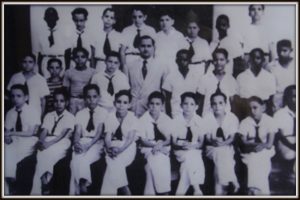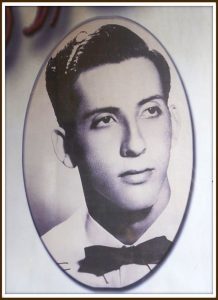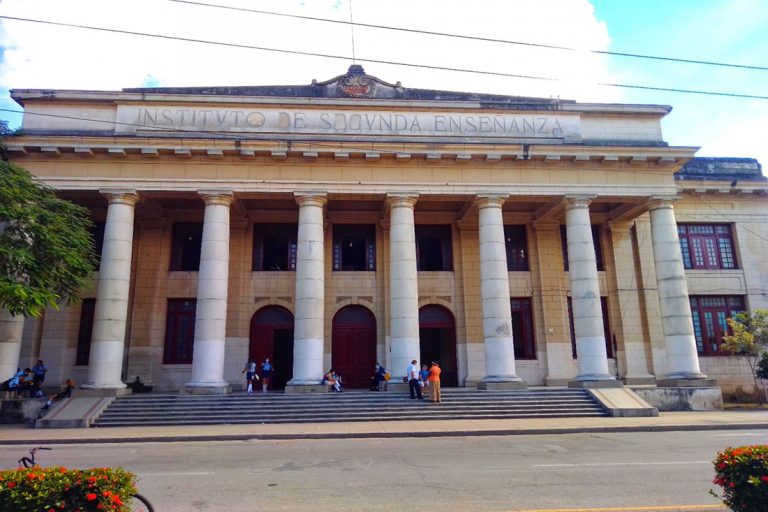A few days ago, while passing through the Casino Campestre, I stopped to greet an eleventh-grade student on the steps of the Álvaro Morel (Charles) high school.
The majesty and beauty of the building, together with the rejoicing of the young people taking a break, led me to wonder what it would be like in the days of the Secondary School, was that youth of that time (1950-1958) so formal to think about their ideals? Would they have the joy of those who today overflow the park across the street?
 Faced with this and other questions, I remembered Jesús Suárez Gayol, Cándido González and so many others, who during the Batista dictatorship, in those same classrooms, corridors or in the park itself, organized clandestine struggle operations, with the aim of liberating the country.
Faced with this and other questions, I remembered Jesús Suárez Gayol, Cándido González and so many others, who during the Batista dictatorship, in those same classrooms, corridors or in the park itself, organized clandestine struggle operations, with the aim of liberating the country.
So I asked the student what he knew about Álvaro Morel. His response was so brief that I deduced how little known this martyr is, who at only 22 years old offered his life for his libertarian ideals. But I remembered that it was one of the revolutionaries close to Jesús Suárez and I went to “the student museum” to relive history. Carlos Manuel, the high school student, accompanied me.
What we found
When he was 14 years old, Álvaro entered the Camagüey Second School Institute and there he interacted with other young people. A dialogue is established between them; they discuss, coordinate ideas and agree to organize an advanced nucleus. Due to his conditions and combativeness, he became a student leader at the Institute shortly after enrolling.
 Given his political maturity, he instantly understands the spirit of the assault on the Moncada barracks, embraces that cause and sees in Fidel Castro the expected leader, so that he becomes a fervent admirer of the heroic deed and recruits the best students of the Institute to support the ideas of the patriotic event.
Given his political maturity, he instantly understands the spirit of the assault on the Moncada barracks, embraces that cause and sees in Fidel Castro the expected leader, so that he becomes a fervent admirer of the heroic deed and recruits the best students of the Institute to support the ideas of the patriotic event.
At that time, he strengthened his ties with Cándido González, Jesús Suárez Gayol, Rodolfo Ramírez Esquivel and other revolutionaries, ready to keep the flame of insurrection alive in Camagüey lands.
When the July 26th Movement is constituted in Camagüey, “Charles” helps with all tasks. His work in this Movement, in one of the toughest stages of the struggle, coincides with the disembarkation of the Granma. He soon received the sad news of the fall of his beloved colleague Cándido González. He knows that if Fidel is alive, the cause will triumph and he dedicates himself to his work in the city.
The sad ending
As the armed struggle took place in the Sierra Maestra, he assumed new and greater responsibilities. He tries in vain to join it. Relentlessly persecuted by the tyranny, he took the path of exile and left for Miami on October 8th, 1957. He found that experience so unpleasant that the following January 28th he left the United States for Mexico, from where he thought it would be easier for him to join one of the groups bound for the Sierra.
Desperate to return to Cuba, he joins an expedition that lacked the best conditions and embarks on the journey.
Near Veracruz, the ship suffered propeller damage. “Charles” is the first one who volunteered to repair the fault. Dynamic and courageous as he was, the boy jumped into the water with boots and clothes, due to the weight he disappeared into the turbulent currents of the Gulf of Mexico.
Carlos Manuel’s eyes
 When reviewing this sad story, which is similar to that of all the young people who from underground in the City of Waterpots risked and lost their lives for a common cause, I see shock on the face of my companion, his expectant eyes reveal the restless thoughts…
When reviewing this sad story, which is similar to that of all the young people who from underground in the City of Waterpots risked and lost their lives for a common cause, I see shock on the face of my companion, his expectant eyes reveal the restless thoughts…
– Carlos Manuel, did you discover something beautiful in our visit to the Student Museum?
– A lot, I imagine Álvaro Morel in my uniform, I see him at a desk in my classroom and he asks me what we young people look like today.
I don’t know what Charles would say of these boys, but I think they should follow his example and make an effort to dignify the memory of Álvaro Morel and build a luminous future, for which so many children of this land gave died.
Translated by: Aileen Álvarez García






